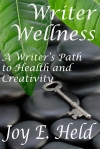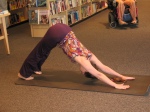 In yoga, life is considered a series of “dukha” or sufferings one after the other, but the lessons of yoga are principally about teaching us to cope with suffering through relaxations or “sukha”. This is the art of relaxing and to yoga this means being comfortable and at ease. It means stillness (sukha) in the body and mind purposely practiced to counter act the opposite feelings of stress (dukha.) Therefore, the “easy pose” is taught as a physical position to take when trying to relax. But for some people the “easy pose” is anything but easy, so why is it called “easy”?
In yoga, life is considered a series of “dukha” or sufferings one after the other, but the lessons of yoga are principally about teaching us to cope with suffering through relaxations or “sukha”. This is the art of relaxing and to yoga this means being comfortable and at ease. It means stillness (sukha) in the body and mind purposely practiced to counter act the opposite feelings of stress (dukha.) Therefore, the “easy pose” is taught as a physical position to take when trying to relax. But for some people the “easy pose” is anything but easy, so why is it called “easy”?
The “easy” translation simply means being the opposite of uneasy or busy and stressed. Although the specific sitting position known as the “easy pose” is traditional, the mere act of sitting or semi-reclining and being motionless can be considered an easy pose. After all, not everyone can sit on the floor with their legs crossed at the ankles for an extended period of time. It would take human or mechanical intervention to get some of them back to standing contradicting the “easy” part.
An “easy pose” is one that allows us to be at ease with ourselves without the urge to fall completely asleep. Most of us are conditioned to begin snoring within a few minutes if we find ourselves lying flat on our backs. Happens all the time in yoga. Corpse pose at the end of class is regularly mistaken by some exhausted individual as nap time and the rest of us are serenaded by the heavy, unburdened breath of someone who has fallen asleep on the mat. That’s okay, but as I’ve said before, sleep is not meditation. Sleep is sleep and meditation is an easy, comfortable state of relaxed alertness.
In meditation we are without the normal business of our bodies and minds (thoughts, movements, sounds.) Instead we are physically still. The only movement is what’s necessary to breathe. And our thoughts are fewer and slower. Thoughts are normal but they bring with them varying degrees of stress, so during meditation the fewer the better. It requires a low level of consciousness or awareness to “quiet the mind” as desired by meditation. The lack of thoughts equals fewer opportunities to be stressed by thinking which equates to feeling at ease—without stress. An easy pose is one that is comfortable enough to bring on the sensation of ease without allowing us to fall asleep.
 Sitting cross-legged on the floor, a stack of blankets, or a meditation cushion IS a comfortable pose for some. Others may need to sit in a chair with feet flat on the floor or lie back on a stack of pillows or a bolster to keep the body from lying completely flat. As long as we are physically at ease, our breath and thoughts will eventually join in and calm down. This is “sukha” or being without the suffering implied by the stress or “dukha” of physical movement and mental stimulation.
Sitting cross-legged on the floor, a stack of blankets, or a meditation cushion IS a comfortable pose for some. Others may need to sit in a chair with feet flat on the floor or lie back on a stack of pillows or a bolster to keep the body from lying completely flat. As long as we are physically at ease, our breath and thoughts will eventually join in and calm down. This is “sukha” or being without the suffering implied by the stress or “dukha” of physical movement and mental stimulation.
The honest challenge is developing the stamina to remain in this position of ease for a particular length of time. Practice, practice, practice and the body will gradually remember its state of comfort and be more cooperative when asked to be still. Remember our bodies and minds are very practiced at zooming all the time. The opposite is challenging (dukha) but rewarding (sukha.) This is balance.
What is your “easy pose”?
 Meanwhile, remember to look for a digital or print copy of Writer Wellness, A Writer’s Path to Health and Creativity at Who Dares Wins Publishing, http://whodareswinspublishing.com.
Meanwhile, remember to look for a digital or print copy of Writer Wellness, A Writer’s Path to Health and Creativity at Who Dares Wins Publishing, http://whodareswinspublishing.com.
Have you subscribed to this Writer Wellness blog yet? Get email updates when a new post is added. Click “subscribe” and leave your email. That’s it and thanks in advance!
Be well, write well.







